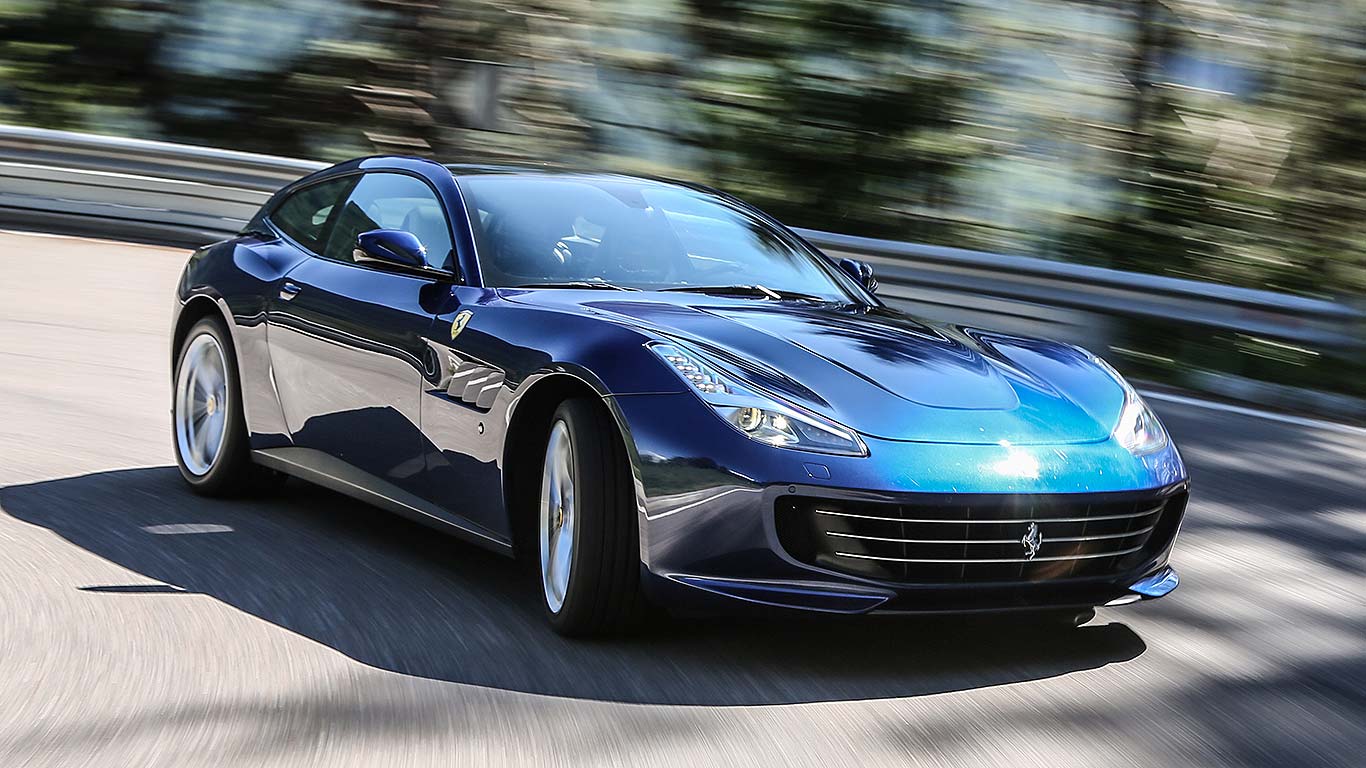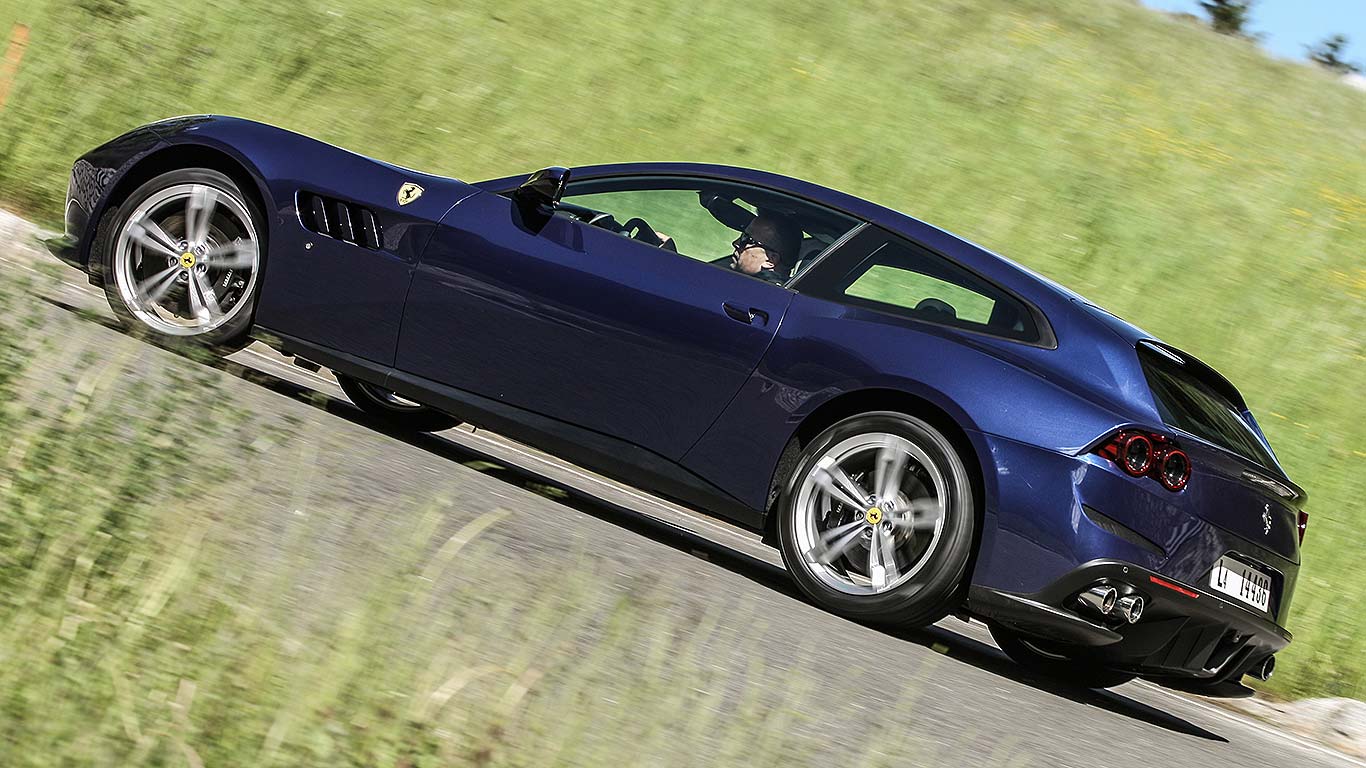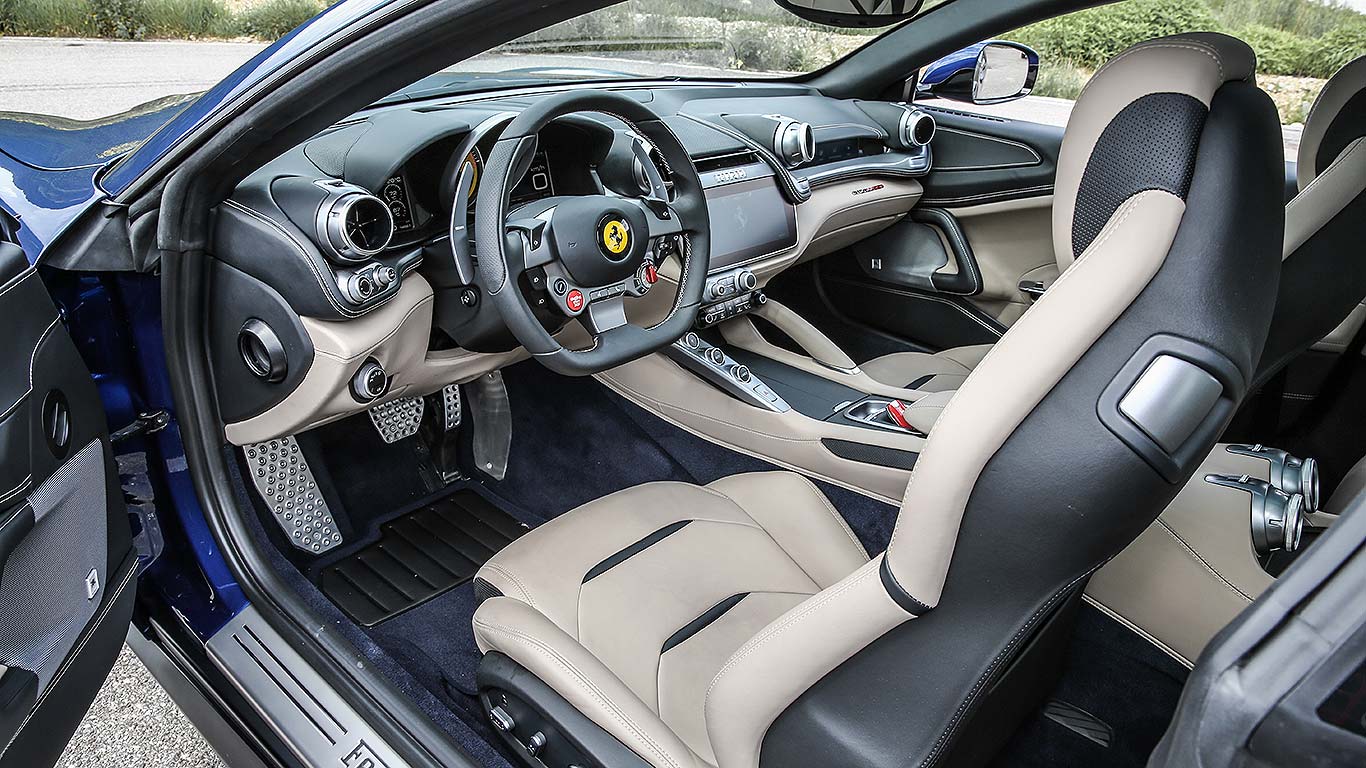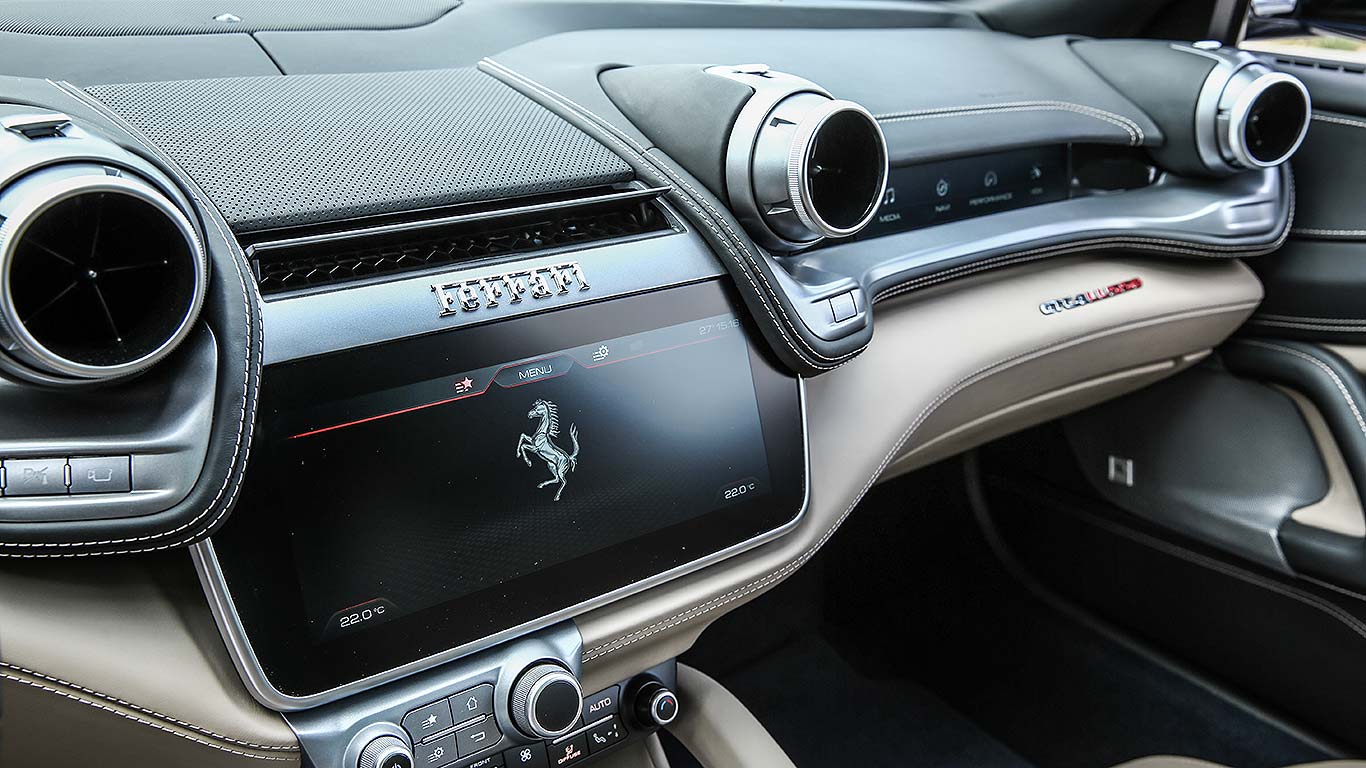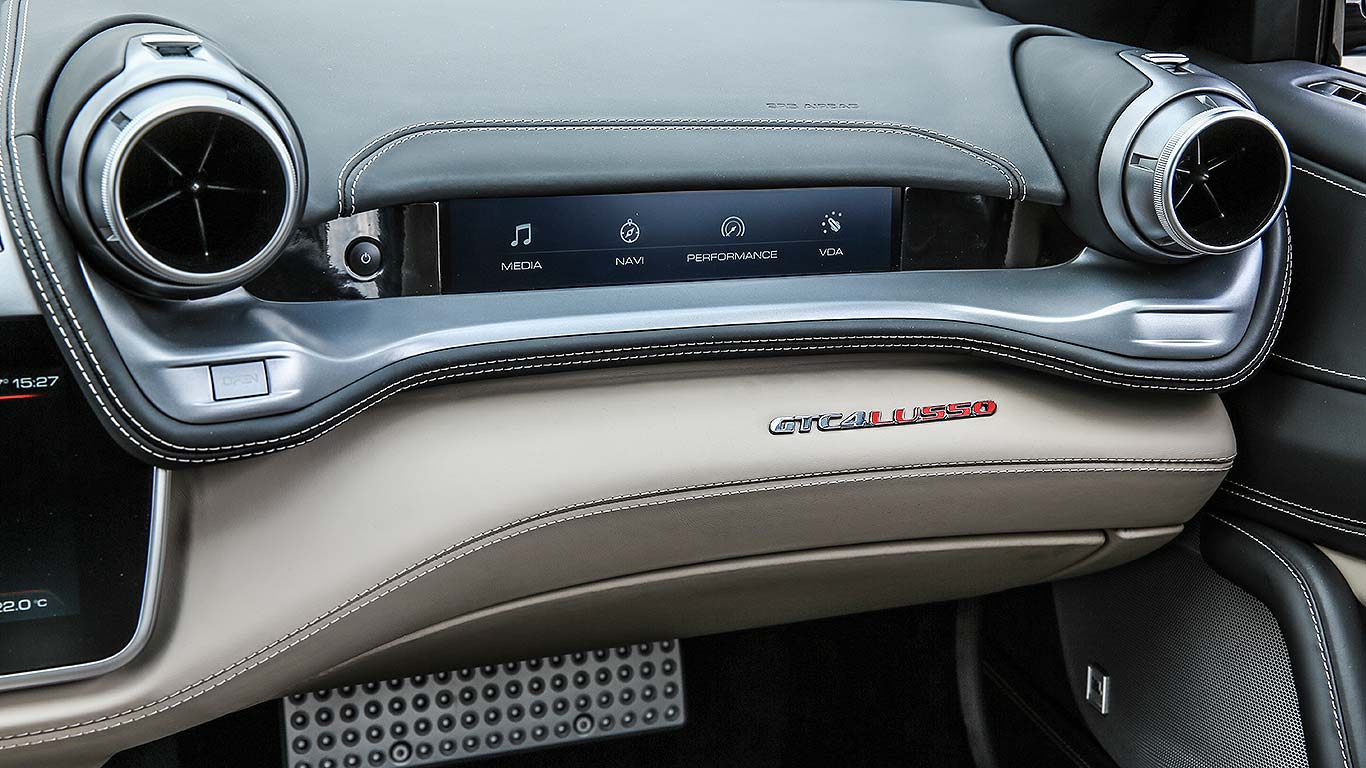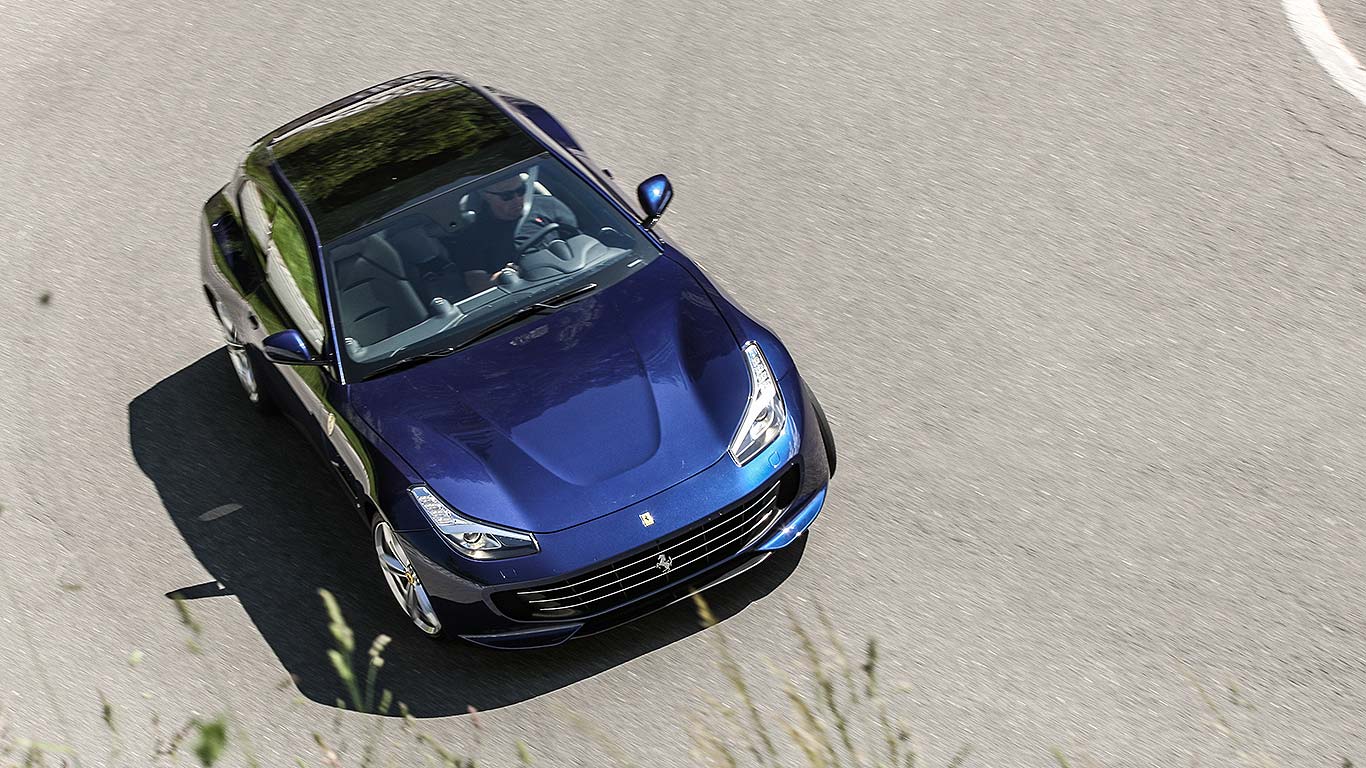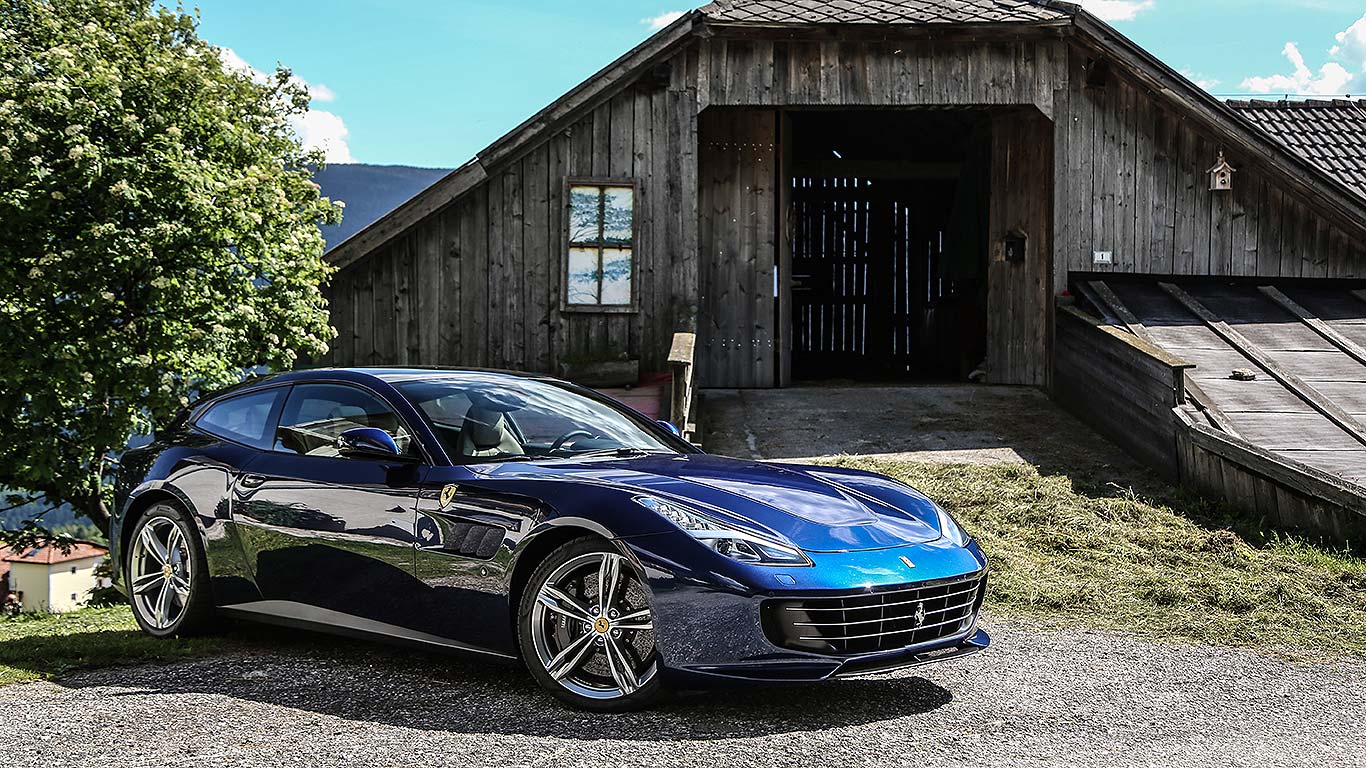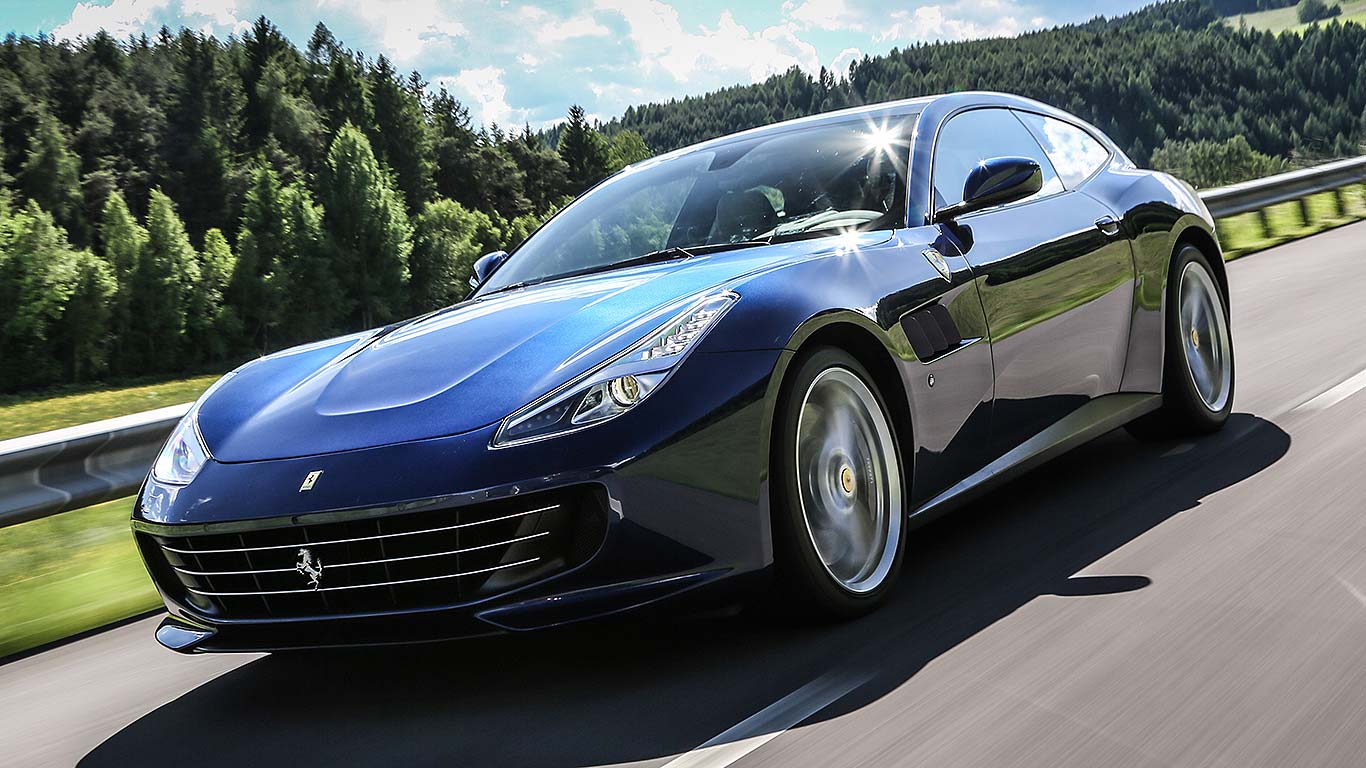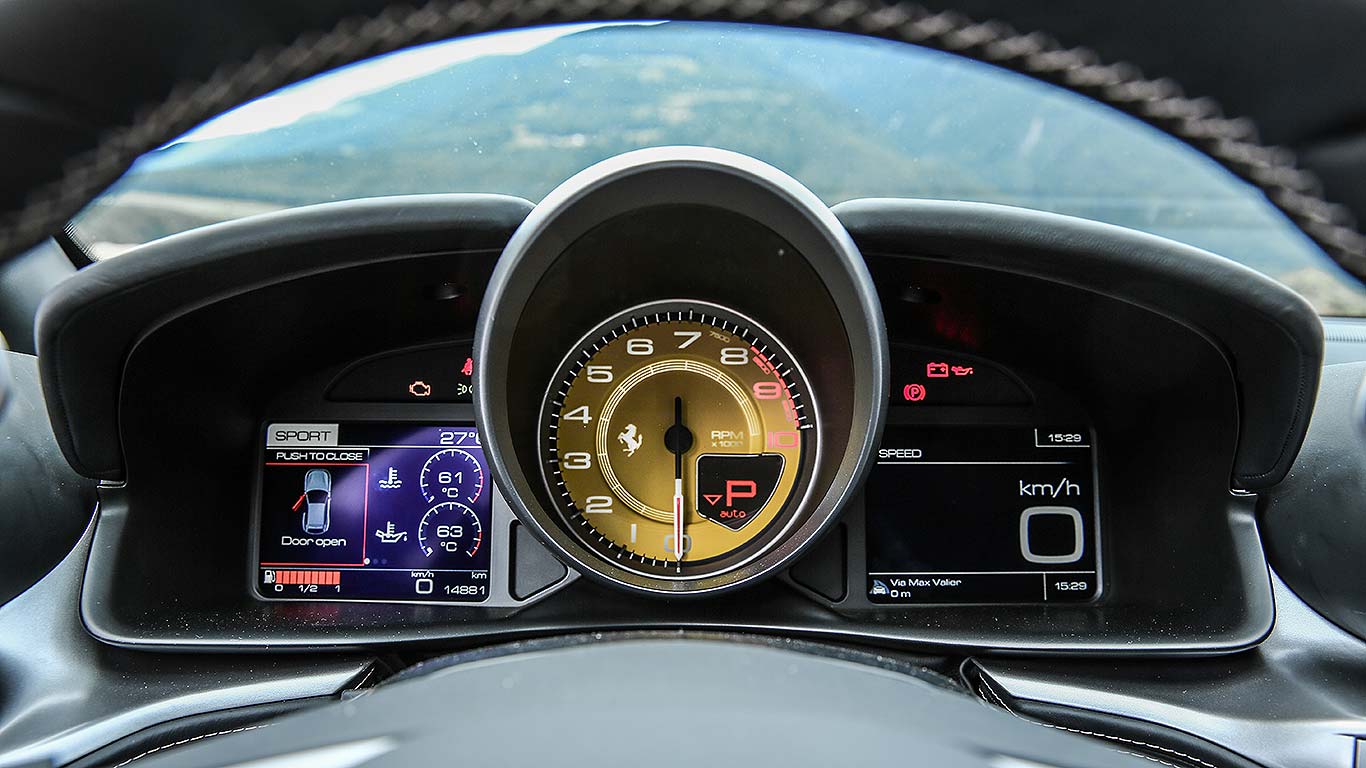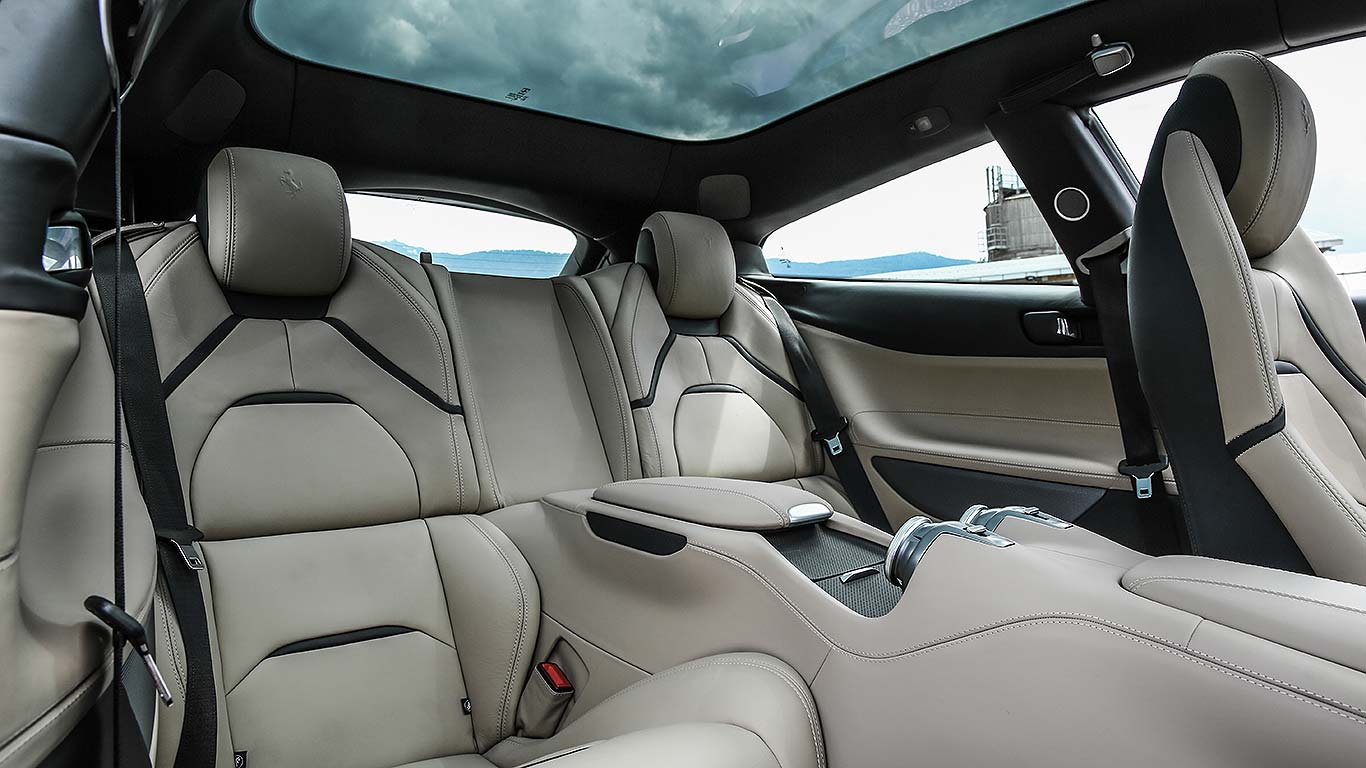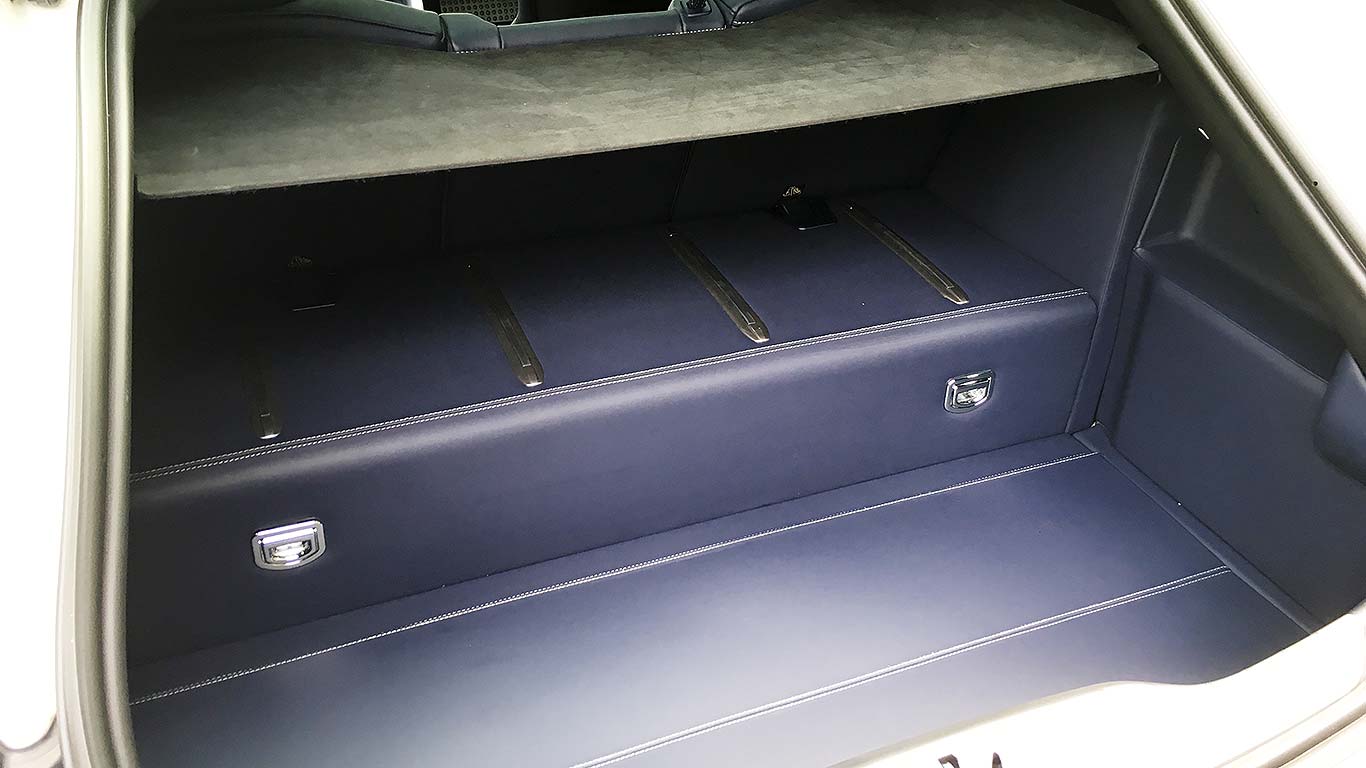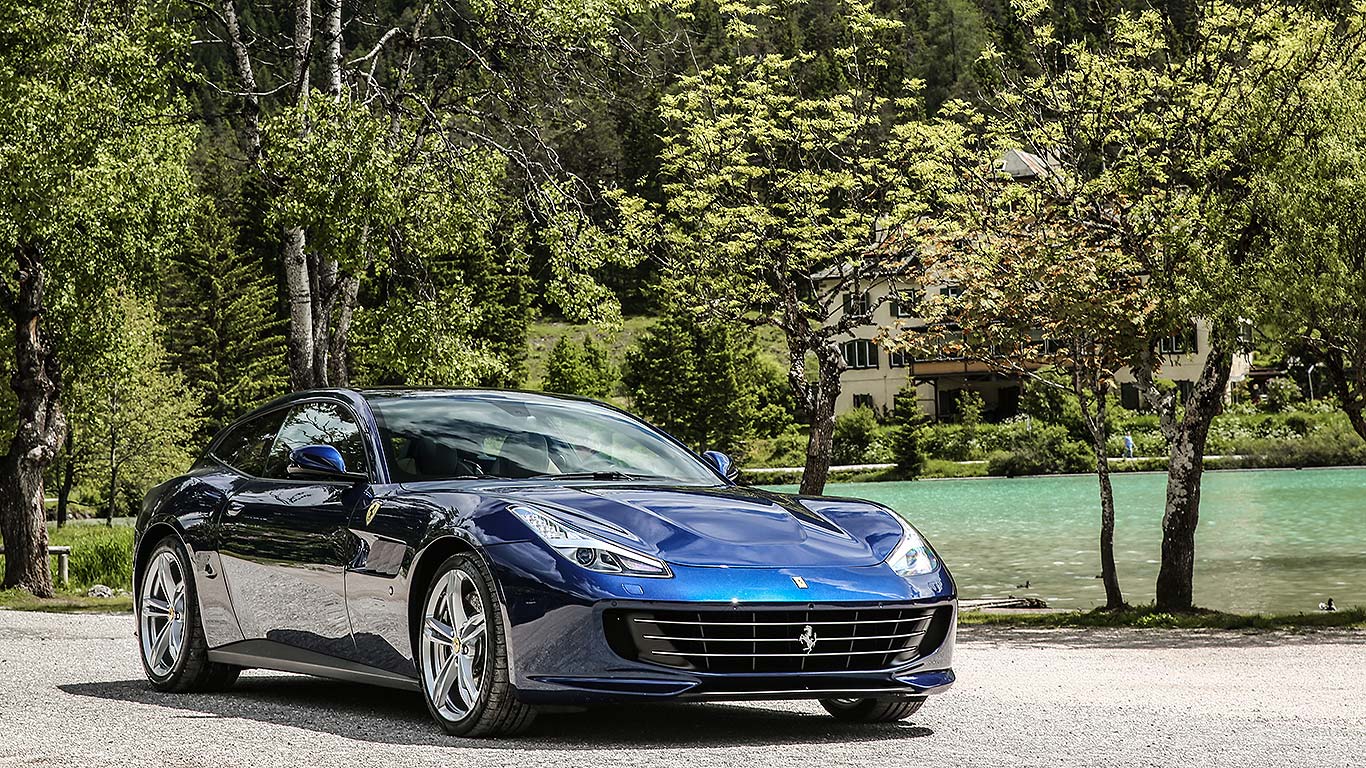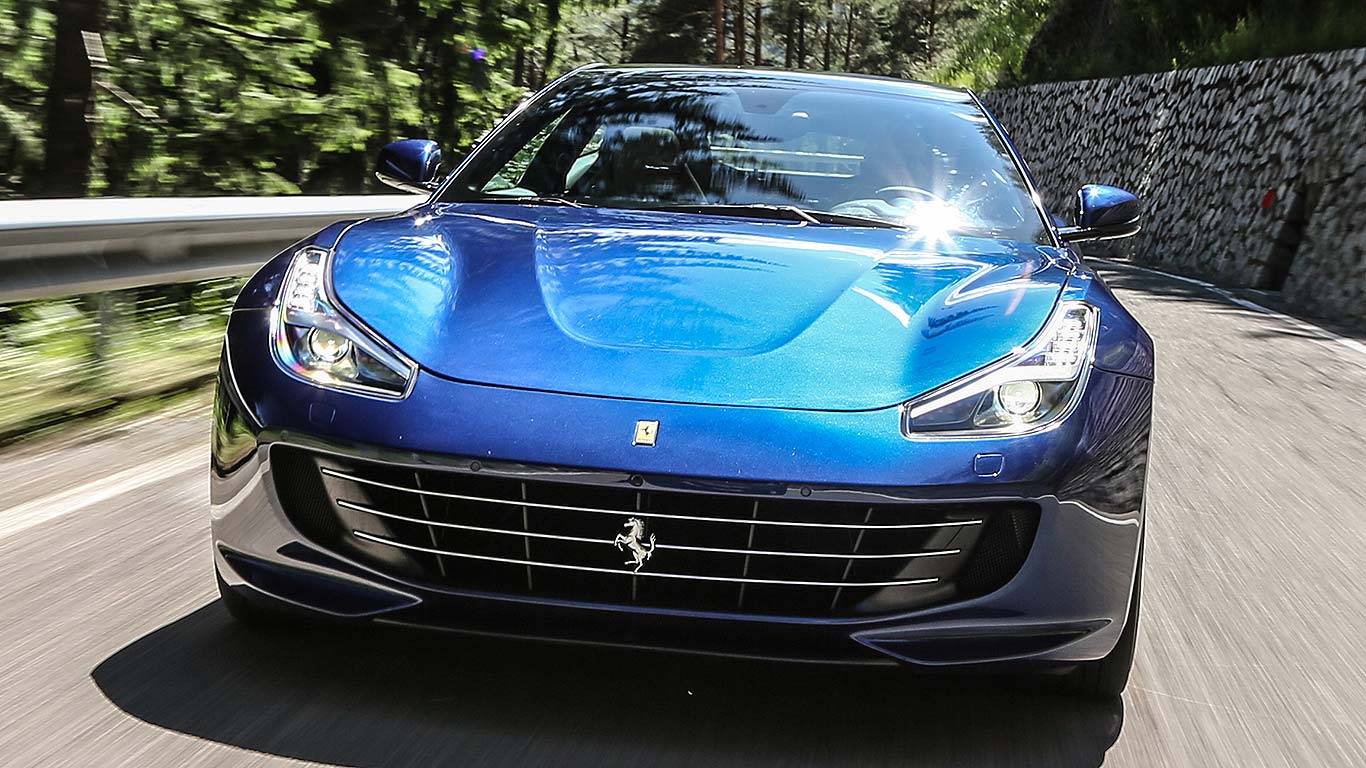 The 2011 Ferrari FF was a groundbreaking car for the world’s most famous supercar brand. Replacing the luxo-cruiser 612 Scaglietti, it eschewed the age-old traditional coupe bodystyle for something much more retro-radical – a shooting brake.
The 2011 Ferrari FF was a groundbreaking car for the world’s most famous supercar brand. Replacing the luxo-cruiser 612 Scaglietti, it eschewed the age-old traditional coupe bodystyle for something much more retro-radical – a shooting brake.
Four full-sized seats, four-wheel drive: it was a Ferrari that shook up the order. And now, Ferrari has shaken the FF itself up, for its mid-life refresh. Bye, FF: hello, GTC4Lusso (yes, there is no space).
So… Ferrari GTC4Lusso: the FF has an all-new name?
Ferrari doesn’t mess about with its facelifts. How many know the 430 was actually a facelifted 360, for example? The ‘M’ in the GTC4Lusso’s F151M codename stands for modificata, but this is more face/off than facelift – every single exterior panel apart from the windscreen is different. And the interior is all-new. It also has a wealth of new tech further beneath the surface: the all-new name is entirely justifiable.
Tell me what they’ve done on the outside
Ferrari has taken the weight out the FF’s design, sharpening it up with tighter creases and more positive/negative surface shapes. The front is much cleaner, wider-looking and, on the road, flatter and meaner in appearance. The rear is similarly broadened, helped here by a lower roofline (presumably a hugely expensive surface metal change). Even the shape of the rear side windows is different: they’re longer and deeper, so it’s nicer for those in the back.
Yikes. And the inside?
This too has an all-new look. And it’s way more appealing than the fussy FF. Built of super-high quality materials, the impeccably finished cabin is shaped around twin ‘cockpits’ defined by the divine air vents. It’s a contemporary luxury contrast to the FF’s slightly early-2000s look. Indeed, FF owners themselves will clamour for a GTC4Lusso just for the step-on inside. And that’s not the half of it.
Looks like Ferrari’s finally sorted out its infotainment system
The GTC4Lusso boasts fantastic new infotainment that has an HD-clarity 10.25-inch screen, 1.5 GHz CPU and the sort of responsive, interactive usability FF owners could only dream about. It’s a delight to use and looks fantastic – and, again at no little expense, it’s also nice how Ferrari has designed the dashboard to wrap around it so it’s fully integrated rather than stand-proud.
What’s that fancy display in front of the passenger?
Ferrari’s even given us a GT-sector first: a bespoke infotainment display for the passenger that’s hooked to the sat nav, audio and, rather brilliantly, the instruments. Yes, passengers can easily see what gear the driver’s in, what speed they’re doing, the engine speed – even what G-forces they’re pulling. The car-fanatic children of GTC4Lusso owners are going to love it.
Impressive tech. What else is beneath the surface?
The FF debuted Ferrari’s clever four-wheel drive system, PTU (so clever, in fact, it’s patented). With adaptive dampers, the Ferrari DCT gearbox and generation-8 ESP, it was impressive stuff. The GTC4Lusso’s more impressive still though. Single-coil adaptive dampers become dual-coil, it has generation-9 ESP and the PTU AWD has been further developed. But that’s not all…
What has Ferrari also spent big on to engineer the GTC4Lusso?
Four-wheel steering, take a bow. The active rear-wheel steer system counter-steers at low speeds to aid agility and turns the wheels in the same direction as the fronts at higher speed to boost stability. Why fit it? Because the GTC4Lusso is a big car – 4.9 metres long, nearly two metres wide – and rear-wheel steering helps shrink it on twisting roads. Effectively so, too – once you’re used to it. More on that shortly.
How does Ferrari pull together all this tech?
As if Ferrari’s software engineers weren’t worked hard enough, the GTC4Lusso also boasts the latest iteration of its ‘side slip control’ electronic brain, SSC4 (also patented). This is what unifies all these different tech features and mechanical systems. It’s the car’s ‘sense’ of how much grip is available beneath each wheel. When it detects one wheel is about to lose grip, it instantly figures out the best way to fix this, immediately firing up the relevant tech to neutralise things. It’s highly-advanced technology involving a huge amount of Ferrari learning and IP: this generation-4 system is the most sensitive iteration yet.
It’s all a bit of a tech-fest then?
It’s jam-packed with technology – so you may actually be pleased to hear the engine, a 6.3-litre V12 derived from the Ferrari Enzo – is decidedly old-school. No turbos, no hybrid, not even engine stop-start. A quarter of Ferrari customers choose a V12 because, why, it’s a Ferrari V12; the firm messes with this formula at its peril. So it’s not gone tech-crazy here. But it has still lived up to its founder Enzo’s assertion that customers buy an engine and get the rest of the car for free…
Wait, what – it now has 690 horsepower?!
Yes, the GTC4Lusso has 690 horsepower, 30 horses up on the FF. And that was hardly a slouch: at launch, it instantly became the world’s fastest four-seat GT car by a ridiculous margin. Even more ridiculous today: 0-62mph takes 3.4 seconds and it can do 208mph flat-out.
So what does such power feel like on the road?
Be in no doubt, the GTC4Lusso is a colossally fast Ferrari. Behind the wheel, you’d swear it’s as fast as the 488GTB, partly because of that ridiculous power output, which makes it one of the most potent cars you can buy, but also because the high-rev drama is so intense. It loudly howls with astounding intensity near its 8,250rpm power peak (yes, 8,250rpm) and, anti-social as it may be, the fireworks it releases are truly remarkable. Particularly if you have three passengers: many of them may well find it a bucket list memory.
Ah, but the FF was always a bit of a drama monster, wasn’t it?
In this revvy and dramatic respect, the GTC4Lusso continues the FF feel. However, at lower revs, it’s very different. Ferrari has boosted the torque curve at normal-driving revs (you get 80 per cent of its pulling power at 1,750rpm), but it’s also made it quieter in normal use. Quieter? Yes, and rightly so. This is a GT car so will be used for meek and mellow driving with others on board, so the last thing you want to be doing is howling through the city looking like a bit of a hooligan. Ferrari’s thus programmed the exhaust baffles to open up less eagerly, and this alone makes the GTC4Lusso feel like a more cohesive GT car.
Er, sounds to me like the FF’s gone soft then
Depends what you mean by soft. Cushy ride? Yes, once you tune into the typical-Ferrari tautness, you’ll note the ride is improbably compliant and quiet, absorbing bumps and potholes without a crash, flowing along undulations without neck-jarring jiggles. This is also a step on from the FF and it makes the GTC4Lusso a more appealing everyday car – which is exactly what Ferrari clients have been asking for. And, as they’re the ones with the £250,000 cheques, Ferrari has obliged.
But does it still have an edge?
Does it ever have an edge. Four-wheel steering is used to boost agility and sharpness, make the steering faster-reacting, and the front end keener to turn-in. The GTC4Lusso is the same size as the FF, but it feels smaller and more shrink-wrapped because the chassis is more confidently agile. Indeed, until you dial into it, you’d almost accuse it of becoming nervous, such is the alacrity it now demonstrates.
Gawd. The last thing I want from a 690-horsepower car is for it to be nervy
Don’t worry. This nervousness is only at first – say, for the first hour or so. All modern Ferraris since the 458 have had fast, high-geared steering and the GTC4Lusso is no exception. Rear-wheel steering adds something extra, though. The back end adds to the turning effect, giving it an initial ‘kick’ when you turn the wheel that feels like a strange form of oversteer at first. Consciously try to sense this and work with it, though. Then, your steering inputs will become smaller (and later into the corner) and the GTC4Lusso will become an extremely sharp and incisive machine with supreme mid-corner stability once it’s turned into the bend. You just have to put a bit of consideration into it for it to be your friend.
And the other dynamic aspects of the GTC4Lusso?
Ferrari fundamentals mean it has high quality dynamics. The steering is firmly weighted and very clean; not packed with pure feel, no, but accurate and pleasant. Brakes are also firm but powerful, the accelerator pedal is one of the nicest you’ll press and the brilliant interruption-free seven-speed DCT gearbox is impeccable (you’ll fall in love with the ‘click’ from the paddles). Oh, and power hard out of corners for the most delicious rear-squat feel of power-on traction, without a hint of nervousness or edge. This is a very well sorted car indeed that, for all its intimidating power output and initial hesitancy, is more on your side than you’d ever expect of such an exotic supercar.
I forgot about the people in the back
As well you may. Don’t worry. Those in the rear have an unexpected amount of room and comfort, further boosted over the FF by a few crucial millimetres here. Two bucket seats are almost as large and enveloping as those in the front, there’s enough headroom for your six-foot correspondent despite the panoramic roof that envelops the interior in light. And the enlarged side windows give a cleaner, nicer view out than the slightly porthole-like FF. It shames a Bentley Continental GT, perhaps its most obvious (only?) rival. Rear passengers even get their own set of those brilliant air vents seen up front. They’re fine. Carry on driving.
If I’m going to justify it, I’ll need more than the fact it’s a four-seater
Will a claimed 450-litre boot do? One that extends to 800 litres with the seats down? Admittedly, it’s a funny shape, and you won’t be seeing much behind you if you if fully-loaded. But it’s still a mark of the GTC4Lusso’s un-Ferrari-like practicality that could work wonders if you utilise its four-wheel traction to drive across muddy fields and buy things from estate car drivers at car boot sales.
Any more sensible stuff?
Well… economy’s less sensible. 18.8mpg combined, and 350g/km CO2. It’s one of the thirstiest, carboniest cars you can buy. And it costs £240,430 without a single option (no Ferrari is sold without a single option). But it does have 12,500-mile service intervals and, unbelievably, servicing is FREE for the first seven (count ’em – seven) years. It’s also the Ferrari you can use every day, should you wish to cut down on your fleet. Not that most GTC4Lusso owners, many of whom own several Ferraris (and half of whom will swap an FF for one) would dream of doing so.
2016 Ferrari GTC4Lusso: verdict
The Ferrari GTC4Lusso is the definitive modern Ferrari GT car. Some up to now haven’t fully digged the mini-estate car styling. For them, Ferrari’s lowered the rear, widened the visuals and made it look more distinctive and less like a prancing horse wagon. But most of its select clientele relish how much extra the GTC4Lusso offers as a result – four seats, four-wheel drive for all-weather driving, all combined with the impeccable lineage of being a V12 Ferrari.
The FF wasn’t perfect. It looked a bit awkward, which Ferrari’s fixed here more successfully than the images fully portray. Its interior was a generation behind, as was its infotainment. Both are now bang-up-to-date. The chassis is more dynamic, although the bigger advantage is actually in improved comfort and GT tendencies, something enhanced by the engine that, although even more wildly powerful and potent, is now also quieter and more dignified when you’re not being Alberto Ascari.
Ferrari’s cut no corners with the GTC4Lusso, and it shows. It’s a highly accomplished GT car. Those who can afford it and take the time to understand how to get the most from it will find a very rewarding ownership proposition indeed.
For
- V12 experience, Ferrari handling with GT comfort
- Luxurious and modern interior
- Very surprising practicality
Against
- Boot not the most useful shape
- Feels nervy if you’re more familiar to Aston Martins and Porsches
- Of course, the price…
2016 Ferrari GTC4Lusso: specifications
Price: £240,430
Engine: 6.3-litre V12
Gearbox: seven-speed dual clutch auto
Power: 690hp
Torque: 514lb ft
0-62mph: 3.4 seconds
Top speed: 208mph
Fuel economy: 18.8mpg
CO2 emissions: 350g/km
Length/width/height: 4922/1980/1383
Kerb weight: 1920kg
